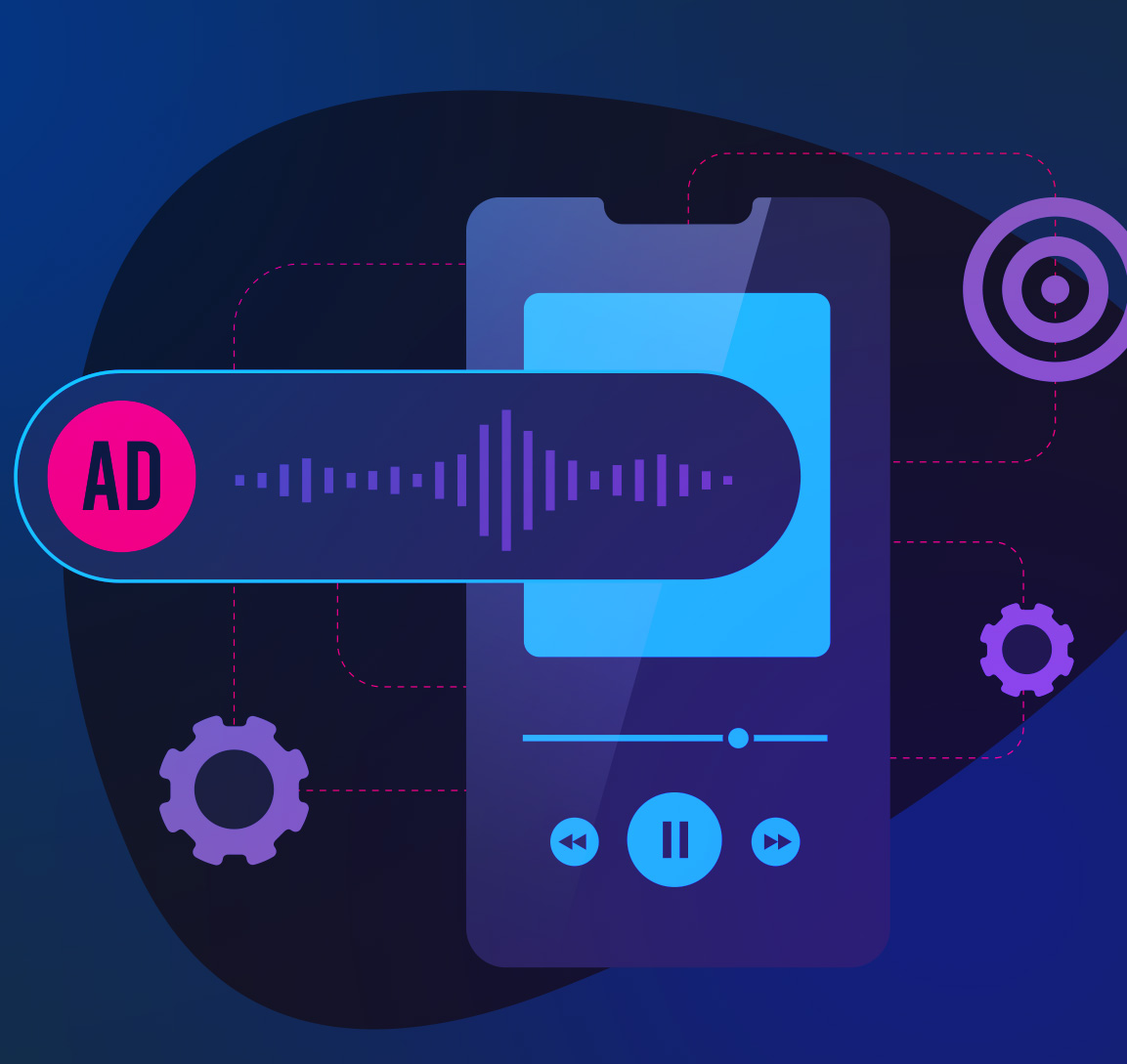Summary:
- Programmatic buying consists of a publisher listing ad inventory on a Supply Side Platform and advertisers buying this inventory through their own Demand Side Platform.
- Programmatic buys can take place in a biddable environment as well as via Programmatic Guaranteed (PG) deals.
- Veritone One can help you put together the perfect mix of programmatic and direct IO buys to meet your campaign goals.
Common misconceptions around programmatic
After attending this year’s Podcast Movement event in Los Angeles, our team noticed something curious: it seems “programmatic” is the word on everyone’s lips these days, which we expected, but it also seems that, for most attendees, the word has taken on a new meaning. I most commonly heard the term “programmatic” to describe any ad spot that is not a host-read endorsed podcast read—which is not the case.
There are two main categories on which Veritone One focuses when buying podcast inventory: Host-Endorsed and Targeted Podcast. For a targeted podcast buy, we utilize targeted ad solutions across the entire podcast network, leveraging first- and third-party data to reach our target consumer, no matter where they are consuming podcasts.
Both of these can be bought programmatically or via a direct insertion order (IO). We’ll dive into the strategy behind each of these methods further down.
First things first, however. For media buyers—and especially for anyone who may be new to advertising on digital channels—it can be quite confusing to hear industry leaders use a term as simple as “programmatic” in disparate ways. So, let’s take a moment to define the term.
So, what exactly is programmatic buying?
What do we mean when we say “programmatic”? Simply put, it is the use of advertising technology to buy and sell digital ad inventory. Seems simple enough; yet, it’s a bit more complex than this.
The first thing to note here is that programmatic buying does not involve the signing of Insertion Orders or contracts, and in most cases, it does not require direct contact with the publisher.
Instead, the publisher (in most cases, the network on which the podcast in question runs) makes their ad spot inventory available via their Supply Side Platform (SSP). This allows for an ad exchange where media buyers and advertisers can bid on that inventory via their seat in a Demand Side Platform (DSP).
For our purposes, “programmatic” refers not only to the technology behind each ad buy, but to the type of marketplace it creates for buying and selling digital ad inventory.
The difference between programmatic buying and direct IOs
Buying media programmatically has its advantages, but there are certain limitations to keep in mind. That’s why the digital team at Veritone One buys a mix of direct IO and programmatic podcast inventory, depending on the needs and goals of our clients.
For a direct buy, we utilize first- and third-party data to target listeners within a certain network. Once we’ve agreed on target audiences, CPM goals, and impressions, we sign a direct IO.
For a programmatic buy, we utilize our preferred Demand Side Platform to create inventory packages with relevant targeting and genre specifications. We also determine campaign deliverables based on the type of programmatic buy we execute.
Different types of programmatic buys
Some programmatic buys occur in a biddable environment, meaning that the buyer (advertiser) adjusts their bids based on presumed impressions. The same ad spot inventory can fetch different bid amounts depending on the current market; as we get closer to this year’s general election, for example, we can expect an increase in Cost Per Mille (CPM) for political content. The more demand there is for that inventory, the more buyers are willing to bid on it.
Because the volume of impressions is not guaranteed at the outset, you always run the risk of underdelivery with this method. With strategic bidding, however—something the media buying experts at Veritone One are well versed in—there is the potential for the buy to deliver impressions at a cheaper CPM than it would through a Programmatic Guaranteed (PG) deal.
A Programmatic Guaranteed deal is just that—a buy in which CPM and impression volume are guaranteed. The buyer and the network would agree on a CPM and impression load for the campaign to deliver in full. As an advertiser in this scenario, you will likely end up paying more in CPMs than you would in a biddable environment, but the benefit is that you can guarantee yourself the impressions—and save yourself the uncertainty.
Once the programmatic buy’s terms have been outlined, we use the DSP to traffic the ad units and monitor Cost Per Mille (CPM) bids and delivery on our end.
Veritone One can help you put together the perfect buy.
As you can see, depending on your campaign goals, you may benefit from either a direct or programmatic buy, which is why at Veritone One, we pride ourselves on being experts at both.
For a broader target, a direct buy allows you to reserve your impression volume, often at a lower rate. But when you want to target more niche markets, a programmatic buy allows you to get granular with targeting and with more scale opportunity.
At the end of the day, as Podcast continues to prove itself a viable and effective marketing channel, the ways we buy and engage audiences within the ecosystem are evolving. The first step in ensuring the perfect buy for your brand? Making sure we’re all speaking the same language when we talk about it.
Edited by Rubi Mora
You May Also Like
Meet the Author

Patrick Kolling

Senior Media Buyer, Digital
Patrick is a Sr. Media Buyer on the digital team at Veritone One, focusing on all things digital audio and video. Patrick plays a pivotal role in planning, buying, and optimizing digital campaigns for a large number of V1 advertisers. When he's not driving highly efficient KPIs for his clients, Patrick can be found in the ocean, probably surfing or diving.

Join Our Monthly Newsletter!
Get insights from the experts in AI-powered advertising for brands and creators





